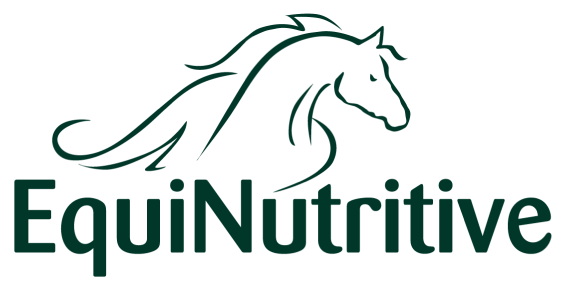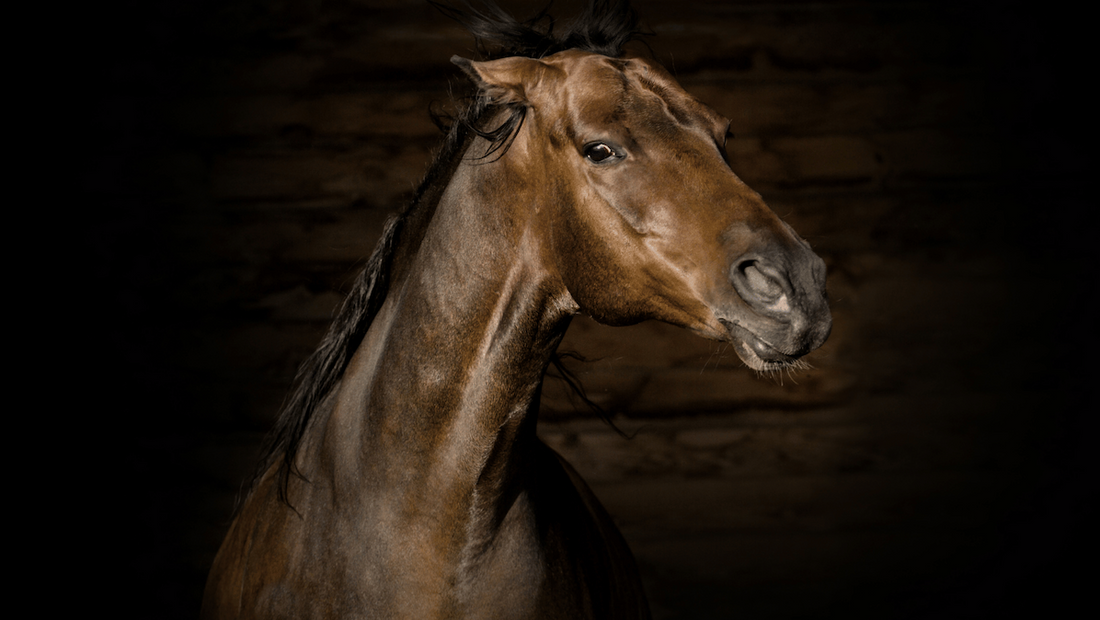Aggression is a behaviour intended to harm, injure, or dominate another horse or, in some cases, a human. It can manifest in different forms and be triggered by various factors. Horses aren’t born aggressive, in fact they normally live quite amicable lives within a herd like structure. There will usually be some sort of underlying factor which contributes to aggressive behaviours. Here we will explore a number of potential triggers for aggressive behaviour:
Common Causes of Aggression in Horses
Environmental Stressors
The environment which domestic horses are kept in is not always ideal and can often prevent them from engaging in natural behaviours. Horses can become bored, frustrated or stressed when unable to display natural behaviours and as a result may resort to aggression.
Past Abuse and Trauma
Horses have excellent memory recall and just like humans, have been known to show PTSD symptoms as a result from previous trauma. Aggression is very common in horses who have previously been mishandled, abused or neglected. Horses who have been ‘bullied’ by more dominant horses in a herd dynamic have tendencies to show aggression towards other horses.
Health Related Issues
Horses can’t communicate their discomfort to us directly so will often display aggressive behaviours as a means of doing this. Pain and discomfort can be caused by a number of factors ranging from poorly fitting tack to gastric ulcers. Pin pointing the exact cause can be difficult and will often require professional input.
Lack of Proper Training
Mishandling and poor training early on in a horse’s life can be a basis for lifelong problems. Horses who are let away with ‘naughty’ behaviours and those who are incorrectly disciplined can display aggressive behaviours for years to come.
Dominance & Social Structure
Horses are flight animals due to the fact they are typically seen as prey, they will normally flee if danger is sensed. In the domesticated environment, horses will not always get the opportunity to flee if they feel threatened, this can result in their ‘fight’ response being displayed instead. If a horse feels threatened by their handler or another horse and has no other means of escaping this, they can resort to aggression as a means of defending themselves.
Hormones
Mares can typically become more aggressive when in season due to a change in hormone levels. Stallions are also known to display more aggressive behaviours due to high levels of testosterone. Horses with conditions such as Cushings that affect the endocrine system and influence hormone levels have also been known to display aggressive behaviours as a result of this.
Recognised Signs of Aggression
Body language is one of the key indicators of a horse’s mood. Some cues that can indicate aggression include:
- Ears pinned back
- Tail swishing
- Retracting the lips
- Teeth bearing
- Head raising and bowing
- Showing the whites of the eyes
- Faecal pile display - a behaviour where horses will defecate frequently normally used to mark territory
- Squealing & snorting
Preventing Aggressive Behaviours
It is very important that horse’s are handled and trained correctly from an early age to minimise the likelihood of behavioural problems developing. The horse’s environment should be kept as stress free as possible, this can be done by ensuring horses have access to the Three F’s - friends, forage and freedom. Within this, there are five animal freedoms to consider when it comes to ensuring horse welfare, these are as follows:
- Freedom from hunger and thirst
- Freedom from discomfort
- Freedom from pain, injury and disease
- Freedom from fear and distress
- Freedom to express natural behaviours
Adopting the Five Freedoms approach is essential to horse welfare and has been shown to have a positive influence on mental wellbeing and behaviour.
Solutions for Aggressive Behaviours
In order to tackle aggression, the underlying reason for this must be addressed. How the behaviour is managed will vary depending on the specific cause.
Extra care should be taken when handling a knowingly aggressive horse. Preferably only experienced handlers should be working with such horses as this will minimise the risk of anyone getting hurt.
Consult the experts
If you suspect your horse’s aggressive behaviour is a pain response, it is important that this is addressed. Consulting with your vet, physio, farrier and dentist can help determine the source of the pain and allow for it to be treated accordingly.
Hormone Supplements
Mares who become aggressive whilst in season may benefit from being fed a hormone support supplement such as Moody Madam during their cycling months, this is typically March-October but can vary between horses. Synthetic hormones such as Regumate should only ever be utilised as a last resort. Whilst we don’t offer a supplement for stallions or riggy geldings, there are a number of these available on the market, pure Agnus cactus (chaste berry) being one of the best natural options.
Calming Supplements
If your horse’s aggressive behaviour is a direct result of stress or anxiety, a calming supplement such as No More Nerves that works to regulate the nervous system and minimise the stress response can be used to help address this. Calmers are unlikely to be effective if the behaviour is a result of another factor.
Desensitisation
Fear related aggression will normally need to be addressed through desensitisation and counter conditioning work. This is often a lengthy process and will not be an overnight fix.
Counter-conditioning
Counter-conditioning is a training technique used to change a horse’s emotional response to a stimulus from negative to positive. It’s commonly used to help horses overcome fear and anxiety related to specific situations by associating the trigger with something they find rewarding or pleasant, such as food or praise.
Step by Step of How to Handle Aggression in Horses
1. Determine the stimulus that causes the horse to react negatively.
2. Introduce the Stimulus Gradually. Expose the horse to the stimulus in a controlled and non-threatening manner. Start at a low intensity that does not provoke fear or anxiety.
3. As the horse is exposed to the stimulus, immediately offer a positive reinforcement (like food rewards, a gentle rub, or verbal praise). The goal is for the horse to begin associating the once-feared stimulus with positive outcomes.
4. As the horse becomes more comfortable with the stimulus at low levels, gradually increase the intensity or proximity while continuing to pair it with positive reinforcement.
5. Repetition and Consistency are key. Counter-conditioning takes time and repeated exposure to fully replace the negative emotional response with a positive one.
If your horse is bored or frustrated, it is important that they are provided with adequate mental and physical stimulation. Ensuring your horse has regular turn out, access to as much forage as possible and is allowed contact with other horses can reduce feelings of boredom and frustration. Horses should be allowed to display natural behaviours and should never be reprimanded for doing so.
In some cases, it may be necessary to seek help from a qualified animal behaviourist. A behaviourist will assess your horse and can advise on a treatment and training programme specific to the horse’s individual needs.

